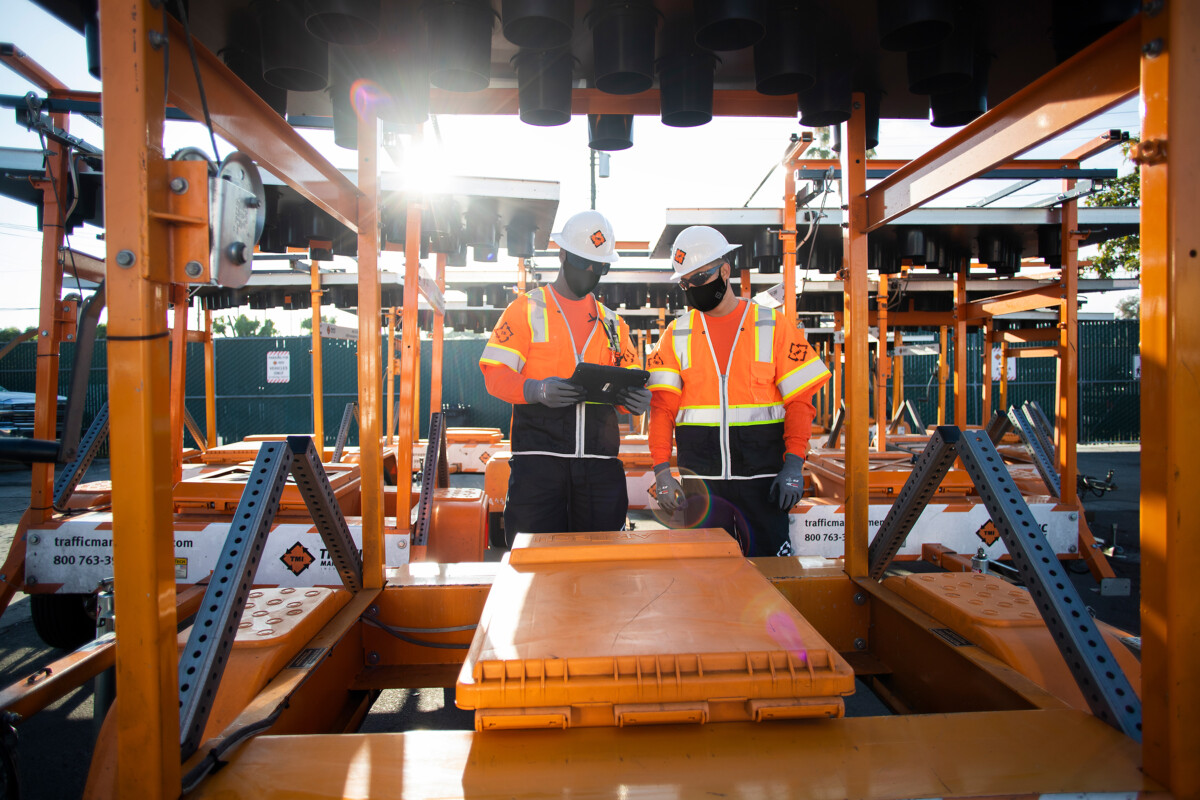COMPANY
Sep 2, 2020
INDUSTRY FEATURE: Deeper Insights

Digital transformation for distributors: 7 ways to get started
By Howard Raphaelson
No matter how hard construction companies work to keep their employees safe, work sites remain inherently hazardous environments. The various heavy machinery and equipment, power tools, countless workers, and structures usually pose life-threating challenges that both the site workers and the stakeholders in the construction industry must deal with to enhance safety.
Fortunately, there are lots of technological construction safety advances that have been made that has led to improved response to incidents and overall construction site safety. Most of us understand the fact that technology has a unique way of making things better by creating efficient methods of accomplishing tasks. One of the primary objectives of any construction contractor is to identify, interpret, and find ways of managing all the potential construction site risks. According to OSHA, if we can eliminate the "fatal four" accidents we could save 631 construction workers every year.
These sites present a unique set of risks and challenges, and that is why a significant number of contractors are already turning to the latest and cutting-edge technological solutions to overcome these challenges and dangers hence minimizing the occurrences of a construction accident which makes the work sites safer. Here are the top seven innovations in the construction industry that aim at improving safety on a construction site.
1. Drones
Drones are a relatively new technology that most construction companies have already started using in their construction projects. Drones are unmanned aerial vehicles that can be used to accomplish a wide range of tasks. Ever since the Federal Aviation Administration established the rules for the use of drones in 2016, most construction companies have embraced their use as a way of enhancing construction site safety.
In the construction industry, these unmanned vehicles are being used for site surveying, inspecting the structures under construction and creating promotional videos. Drones are also being used to make the construction sites safer since they can easily conduct inspections and identify potential hazards.
Contractors can also use drones to monitor workers to ensure that every employee is working safely. They are also being used to take photographs as the construction work progresses to create built-in models that are used to keep every worker informed of the changing work conditions as the construction progresses.
2. Virtual Reality
VR simulators have been used for many years to train pilots and surgeons. They could also be used the same way to train construction site workers on essentially everything, from operating cranes and excavators to doing masonry work and wielding. Equipment operator training and safety training are the two major areas where virtual reality could impact the construction industry soon.
The construction industry workers could get exposure to severe environments such as limited spaces or working at greater heights in a controlled environment. The adoption of the use of virtual reality in the construction industry would limit the number of accidents that occur during training sessions and also eliminate the fear that is associated with operating the heavy construction machinery and equipment.
3. Augmented Reality
Augmented reality (AR) allows architects and planners to collaborate with contractors and clients in real time, adapting plans and processes at every single stage. This means that data and images can be overlaid onto physical spaces which allow the build information to be shared, hence leading to a significant reduction in risks associated with the project.
Augmented reality is especially useful in highlighting hazards in complicated areas of the project. This technology also allows managers to identify all the tricky and most dangerous points in the construction schedule. In the future, it is expected that both augmented reality and virtual reality will be used to scan physical buildings against designs which will help minimize risks and enhance the overall quality of construction.
4. Stay Safe App
The emergence of mobile applications has also transformed every aspect of our daily lives including enhancing safety in the construction industry. One such app that is playing a huge role in improving construction site safety is the Stay Safe App. The app allows employees to start timed sessions before they begin a period of lone work for easy monitoring. This triggers GPS tracking and a countdown which is visible to anyone that can access the hub.
It also features a Panic Button that allows workers to send an instant panic alert in case they are in trouble and need urgent assistance. The Man Down feature monitors the employee movement and will send distress calls if the worker hasn’t moved for a prolonged period. This is a well-designed and simple to use app that can enhance safety at the construction sites.
5. Hard Hats That Detect Carbon Monoxide
A typical construction site is a place where anything can happen anytime, and even the safest job sites tend to harbor lots of unseen dangers. Most of us understand the fact that carbon monoxide is a real threat to human lie no matter where you are. However, it becomes more difficult for construction site workers to detect the presence of carbon monoxide in time to prevent life-threatening injury to workers.
The innovation of hard hats that are fitted with carbon monoxide sensors has made job sites safer for the employees. With these types of hats, construction site workers can know in advance if a certain area is unsafe and take the necessary steps to correct the situation before someone is hurt.
6. Touchless Signature
A very common issue contractors are facing in the field is acquiring much-needed signatures. TMI developed a remote document signing solution to be used in the field. This hands-free signing solution protects both our Traffic Controllers and customers from any potential virus or germ exposure by being able to maintain social distancing.
Rather than having the onsite foreman or subcontractor sign the generated work receipt on a TMI iPad, this new signing system sends the receipt through an email or SMS text message to both the onsite contact and the customer contact in-office.
7. Site Sensors
Several companies have also developed site sensors that can monitor various aspects of the construction site such as noise levels, temperature and the volatile organic compounds to help protect the workers. These smart site sensors are usually mounted throughout the construction site and can alert the employees promptly whenever there is a significant risk.
Howard Raphaelson is a partner at Raphaelson & Levine Law Firm in Manhattan New York.
By Howard Raphaelson
No matter how hard construction companies work to keep their employees safe, work sites remain inherently hazardous environments. The various heavy machinery and equipment, power tools, countless workers, and structures usually pose life-threating challenges that both the site workers and the stakeholders in the construction industry must deal with to enhance safety.
Fortunately, there are lots of technological construction safety advances that have been made that has led to improved response to incidents and overall construction site safety. Most of us understand the fact that technology has a unique way of making things better by creating efficient methods of accomplishing tasks. One of the primary objectives of any construction contractor is to identify, interpret, and find ways of managing all the potential construction site risks. According to OSHA, if we can eliminate the "fatal four" accidents we could save 631 construction workers every year.
These sites present a unique set of risks and challenges, and that is why a significant number of contractors are already turning to the latest and cutting-edge technological solutions to overcome these challenges and dangers hence minimizing the occurrences of a construction accident which makes the work sites safer. Here are the top seven innovations in the construction industry that aim at improving safety on a construction site.
1. Drones
Drones are a relatively new technology that most construction companies have already started using in their construction projects. Drones are unmanned aerial vehicles that can be used to accomplish a wide range of tasks. Ever since the Federal Aviation Administration established the rules for the use of drones in 2016, most construction companies have embraced their use as a way of enhancing construction site safety.
In the construction industry, these unmanned vehicles are being used for site surveying, inspecting the structures under construction and creating promotional videos. Drones are also being used to make the construction sites safer since they can easily conduct inspections and identify potential hazards.
Contractors can also use drones to monitor workers to ensure that every employee is working safely. They are also being used to take photographs as the construction work progresses to create built-in models that are used to keep every worker informed of the changing work conditions as the construction progresses.
2. Virtual Reality
VR simulators have been used for many years to train pilots and surgeons. They could also be used the same way to train construction site workers on essentially everything, from operating cranes and excavators to doing masonry work and wielding. Equipment operator training and safety training are the two major areas where virtual reality could impact the construction industry soon.
The construction industry workers could get exposure to severe environments such as limited spaces or working at greater heights in a controlled environment. The adoption of the use of virtual reality in the construction industry would limit the number of accidents that occur during training sessions and also eliminate the fear that is associated with operating the heavy construction machinery and equipment.
3. Augmented Reality
Augmented reality (AR) allows architects and planners to collaborate with contractors and clients in real time, adapting plans and processes at every single stage. This means that data and images can be overlaid onto physical spaces which allow the build information to be shared, hence leading to a significant reduction in risks associated with the project.
Augmented reality is especially useful in highlighting hazards in complicated areas of the project. This technology also allows managers to identify all the tricky and most dangerous points in the construction schedule. In the future, it is expected that both augmented reality and virtual reality will be used to scan physical buildings against designs which will help minimize risks and enhance the overall quality of construction.
4. Stay Safe App
The emergence of mobile applications has also transformed every aspect of our daily lives including enhancing safety in the construction industry. One such app that is playing a huge role in improving construction site safety is the Stay Safe App. The app allows employees to start timed sessions before they begin a period of lone work for easy monitoring. This triggers GPS tracking and a countdown which is visible to anyone that can access the hub.
It also features a Panic Button that allows workers to send an instant panic alert in case they are in trouble and need urgent assistance. The Man Down feature monitors the employee movement and will send distress calls if the worker hasn’t moved for a prolonged period. This is a well-designed and simple to use app that can enhance safety at the construction sites.
5. Hard Hats That Detect Carbon Monoxide
A typical construction site is a place where anything can happen anytime, and even the safest job sites tend to harbor lots of unseen dangers. Most of us understand the fact that carbon monoxide is a real threat to human lie no matter where you are. However, it becomes more difficult for construction site workers to detect the presence of carbon monoxide in time to prevent life-threatening injury to workers.
The innovation of hard hats that are fitted with carbon monoxide sensors has made job sites safer for the employees. With these types of hats, construction site workers can know in advance if a certain area is unsafe and take the necessary steps to correct the situation before someone is hurt.
6. Touchless Signature
A very common issue contractors are facing in the field is acquiring much-needed signatures. TMI developed a remote document signing solution to be used in the field. This hands-free signing solution protects both our Traffic Controllers and customers from any potential virus or germ exposure by being able to maintain social distancing.
Rather than having the onsite foreman or subcontractor sign the generated work receipt on a TMI iPad, this new signing system sends the receipt through an email or SMS text message to both the onsite contact and the customer contact in-office.
7. Site Sensors
Several companies have also developed site sensors that can monitor various aspects of the construction site such as noise levels, temperature and the volatile organic compounds to help protect the workers. These smart site sensors are usually mounted throughout the construction site and can alert the employees promptly whenever there is a significant risk.
Howard Raphaelson is a partner at Raphaelson & Levine Law Firm in Manhattan New York.


